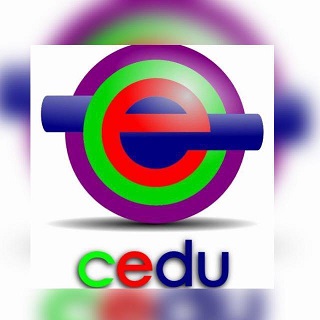PLAYING FOR BLIND CHILDREN
Keywords:
Children's games, Blindness, ChildAbstract
The subject of this article is play for blind children. The social interaction of children with disabilities has always been difficult, sometimes due to lack of knowledge or lack of interest in finding ways to adapt the games. Thus, although playing is a right guaranteed by law for all children, a large part of those with visual impairment and other disabilities are excluded from these moments. Thus, the aim of this article is to present an intervention project for the use of adapted games for children with visual impairment. This proposal is based on the offer of games and games as a wheel; my master ordered; what is what is it? For this purpose, classrooms equipped with materials aimed at blind children will be needed, such as a rattle ball, strings, Golden Material and tactile flooring. We opted for qualitative and continuous assessment, as it takes into account what children learn from the concepts worked on while participating in games and games.
Downloads
References
ABCD DO BEBÊ. Chapeuzinho Vermelho. ABCD DO BEBÊ. Disponível em: https://www.abcdobebe.com/comunidade/contos-infantis/chapeuzinho-vermelho/. Acesso em 20 abr. 2018.
ABCD DO BEBÊ. História do João e da Maria. ABCD DO BEBÊ. Disponível em: https://www.abcdobebe.com/comunidade/contos-infantis/a-historia-do-joao-e-da-maria/. Acesso em 20 abr. 2018.
ALMEIDA, C. C; TAVARES, H. M. O brincar e a criança com deficiência. Revista da Católica, v.1, n2, p.159-168, 2009.
BARBOSA, Maria Carmen Silveira. Jogo, brinquedo, brincadeira e a educação. Educ. Soc., Campinas, v. 18, n. 59, p. 398-404, ago. 1997. Disponível em: http://www.scielo.br/scielo.php?script=sci_arttext&pid=S0101-73301997000200011&lng=en&nrm=iso. Acesso em: 24 abr. 2018.
BEBÊ ATUAL. Os três porquinhos. BEBÊ ATUAL. Disponível em: https://bebeatual.com/historias-os-tres-porquinhos_53. Acesso em 20 abr. 2018.
BEBÊ ATUAL. Patinho Feio. BEBÊ ATUAL. Disponível em: https://bebeatual.com/historias-patinho-feio_105. Acesso em 20 abr. 2018.
BRASIL. Lei no 8.069, de 13 de julho de 1990. Dispõe sobre o Estatuto da Criança e do Adolescente e dá outras providências. Diário Oficial [da] República Federativa do Brasil, Brasília, DF, 16 jul. 1990. Disponível em: http://www.planalto.gov.br/ccivil_03/LEIS/L8069.htm#art266. Acesso em: 15 set. 21.
CAIADO, K. R. M. Aluno deficiente visual na escola: lembranças e depoimentos. Campinas, SP: Autores Associados: PUC, 2003.
CORDAZZO, S. T. D.; VIEIRA, M. L. A brincadeira e suas implicações nos processos de aprendizagem e de desenvolvimento. Estud. pesqui. psicol., Rio de Janeiro, v. 7, n. 1, jun. 2007. Disponível em http://pepsic.bvsalud.org/scielo.php?script=sci_arttext&pid=S1808-42812007000100009&lng=pt&nrm=iso. Acesso em: 19 abr. 2018.
DEMO, P. Avaliação Qualitativa. 10ª edição. Campinas: Autores Associados, 2008.
FÁBULAS E CONTOS. Pinóquio. FÁBULAS E CONTOS. Disponível em: http://www.fabulasecontos.com/pinoquio/. Acesso em 20 abr. 2018.
FARIAS, Á. L. P. DE; MAIA, D. F.; OLIVEIRA, M. A. T. DE. Lúdico e a afetividade no processo ensino aprendizagem. Cenas Educacionais, v. 2, n. 2, p. 25-41, 31 dez. 2019. Disponível em: https://www.revistas.uneb.br/index.php/cenaseducacionais/article/view/8019/5207. Acesso em: 15 set. 2021.
HEYMEYER, H.; GANEN, L. O bebê, o pequerrucho e a criança maior: guia para a interação com crianças com necessidades especiais. São Paulo: Memmon, 2004.
MIRANDA, M. J. C.; QUADROS, É. S.; SILVA, D. F. Deficiência visual e o ensino da matemática: relato de uma trajetória escolar bem sucedida. Anais... Encontro Da Associação Brasileira De Pesquisadores Em Educação Especial, 7, 2011, Londrina de 08 a 10 novembro de 2011. ISSN 2175 Pg. 177-189. Disponível em: http://www.uel.br/eventos/congressomultidisciplinar/pages/arquivos/anais/2011/processo_inclusivo/017-2011.pdf. Acesso em 17 mar. 2018.
MIRANDA, M. J. C. Inclusão escolar e deficiência visual: trajetória e processo. Revista Ibero-Americana de Estudos em Educação, v. 3, n. 1 e 2, 2008. Disponível em: https://periodicos.fclar.unesp.br/iberoamericana/article/view/2678/2388. Acesso em 02 abr. 2018.
PORTAL EDUCAÇÃO. A importância do brincar. Portal Educação. Disponível em: https://www.portaleducacao.com.br/conteudo/artigos/educacao/a-importancia-do-brincar/3551. Acesso em 28 mar. 2018.
QUINET, A. Um olhar a mais: ver e ser visto na psicanálise. 2ª edição. Rio de Janeiro: Jorge Zahar Ed., 2004.
RUIZ, L. C.; BATISTA, C. G. Interação entre crianças com deficiência visual em grupos de brincadeira. Rev. bras. educ. espec., Marília, v. 20, n. 2, p. 209-222, Junho 2014. Disponível em: http://www.scielo.br/scielo.php?script=sci_arttext&pid=S1413-65382014000200005&lng=en&nrm=iso. Acesso em: 25 abr. 2018.
SILVA, E. F. Como brincar com crianças com deficiência visual. Dom Valente. 2016. Disponível em: http://domvalente.com.br/brincadeira-visual/. Acesso em: 13 abr. 2018.
SOUZA, C. M. L.; BATISTA, C. G. Interação entre crianças com necessidades especiais em contexto lúdico: possibilidades de desenvolvimento. Psicol. Reflex. Crit., Porto Alegre, v. 21, n. 3, p. 383-391, 2008. Disponível em: http://www.scielo.br/scielo.php?script=sci_arttext&pid=S0102-79722008000300006&lng=en&nrm=iso. Acesso em: 25 abr. 2018.
STAINBACHK, S.; STAINBACHK, W. Inclusão: uma guia para educadores. Porto Alegre: Artes Médicas, 1999. Trad.: Magda França.
TERRA, M. R. O DESENVOLVIMENTO HUMANO NA TEORIA DE PIAGET. Publicações de alunos de graduação e pós-graduação do Instituto de Estudos da Linguagem, UNICAMP, 2018. Disponível em: https://www.unicamp.br/iel/site/alunos/publicacoes/. Acesso em: 20 abr. 2018.
VOLPATO, G. Jogo e brinquedo: reflexões a partir da teoria crítica. Educ. Soc., Campinas, v. 23, n. 81, p. 217-226, dez. 2002. Disponível em: http://www.scielo.br/scielo.php?script=sci_arttext&pid=S0101-73302002008100011&lng=en&nrm=iso. Acesso em: 24 abr. 2018.
Published
How to Cite
Issue
Section
License
Copyright
The submission of originals to Cenas Educacionais (Educational Scenes - CEDU) implies the transfer, by the authors, of the publication rights. The copyright for the manuscripts published in this journal is the author(s), with CEDU rights over the first publication. Authors(s) may only use the same results in other publications by explicitly indicating CEDU as the means of the original publication.
Creative Commons License
Except where otherwise specified, the terms of a Creative Commons Attribution-ShareAlike 4.0 International License license apply to the material published in this journal, which allows unrestricted use, distribution and reproduction in any medium provided the original publication is correctly cited.






 This work is licensed with a License
This work is licensed with a License 